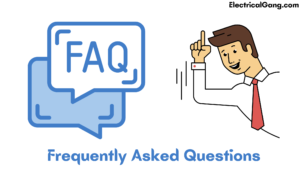Hello friends, in today’s article we are going to talk about what is the working principle of what is a 4-point starter and what is its use. And what is the difference between a 3-point starter and a 4-point starter?
The first startup was created in 1903 by Coleman Then in 1911 Catering and Henry M. Leyland did more experiments on the starter and in 1911 invented a new starter that is currently used to turn on the electric machine.
What is a 4-Point Starter?
The first question that needs to be kept in mind is that we need 4 points to control the current at the start of the motor and stop it from going into the motor and turn it on smoothly and save the motor from loss of overload. Is.
It consists mainly of 4 points and is known as 4 point starter with 4 points which are L (line), F (field), and A (armature). The mainline is used to power the motor. While F is connected to the stator winding of the motor.
And A means the armature is attached to the rotating parts of the motor. Now 3 points are also 1 point apart from this it is known as a neutral point and it is connected to the voltage coil.
Suggested Read: Star Delta Starter Working Principle | Types of Star Delta Starter | Star Delta Starter Theory
Working Principle 4 Point Starter:
This starter works on the principle of electromagnetic. When current flows through the coil and it becomes strong due to flux generated in it which attracts the soft iron part attached to the handle. When this handle becomes reversible, we can prevent the excess currents by adding the resistance attached to the series.
Construction Of 4-Point Starter:
Thus the line is connected to a soft piece of iron by electromagnetic reinforcement. Which allows current to pass through the electromagnetic. When this electromagnet is excited it attracts a piece of iron because the piece of iron is attracted due to lack of power.

To prevent the force of attraction from the electromagnet, a side spring is attached where there are two 2 terminals. One is equipped with an electromagnet and the other is attached to the handle. The first end is connected to the overload coil and the second end is connected to the hold coil.
The starting resistance circuit is connected to the Holland coil in series. Apart from this, there are additional barriers attached to the field winding. After exiting the coil, the handle is directed to move over the studs. This increases the barrier. The barrier is increased due to the movement of the handle which also attracts the electromagnet and attracts a soft piece of iron.
Suggested Read: What Is a Motor Starter? | Types of Motor Starters | Advantage of Motor Starter
Operation Of 4 Points Starter:
The handle comes in contact with the studs due to the motion of the handle on the stud. The stud resistance causing the circuit is gradually reduced.
And take the handle to the last stud
When this handle is on the first stud, it has more resistance. Due to its high resistance, it controls the flow at the beginning. However, due to the high barrier, this can prevent the beginning of the current. The barrier is reduced as the handle moves forward.
The current has gradually increased due to the reduction of the barrier. Now the handle in the rotation reaches the final position. Originally this work could be performed due to 2 forces: one force of attraction and the opposing force when this handle is moved attracts the strongly attached electromagnet And a soft piece of iron is attracted.
Due to the opposing force of the spring, it helps to control the position of the handle. The gravitational force must be greater than the opposing force to hold back. If the opposing force is greater than before, the handle returns to the stud across 1no. Always be careful that the force of attraction should be greater to maintain the required speed.
Difference Between 3-Point Starter and 4-Point Starter:
| Basic | 3 Point Starter | 4 Point Starter |
| Terminal | It has 3 terminals | It has 4 terminals |
| Terminal Name | L (Line), F (Field), A (Armature) | L (Line), F (Field), A (Armature) N(Neutral) |
| Field Winding | Hold Coil Joint In Series | Hold Coil Joint In Parallel |
Most Commonly Asked Questions:

What is a 4-Point Starter?
The first question that needs to be kept in mind is that we need 4 points to control the current at the start of the motor and stop it from going into the motor and turn it on smoothly and save the motor from loss of overload. Is. It consists mainly of 4 points and is known as 4 point starter with 4 points which are L (line), F (field), and A (armature). The mainline is used to power the motor. While F is connected to the stator winding of the motor.
Which motor uses 4 point starter?
DC shunt motor field 4-point starter is used to start and control the speed of the DC shunt motor with weak control.
Where do we use 4 point starter?
The 4-point starter protects the armature of the DC shunt motor or compound wound DC motor against the high current from the start of the DC motor.
What is the difference between 3 points and 4-point starters?
| Basic | 3 Point Starter | 4 Point Starter |
| Terminal | It has 3 terminals | It has 4 terminals |
| Terminal Name | L (Line), F (Field), A (Armature) | L (Line), F (Field), A (Armature) N(Neutral) |
| Field Winding | Hold Coil Joint In Series | Hold Coil Joint In Parallel |
Like this post? Could you share it with your friends?